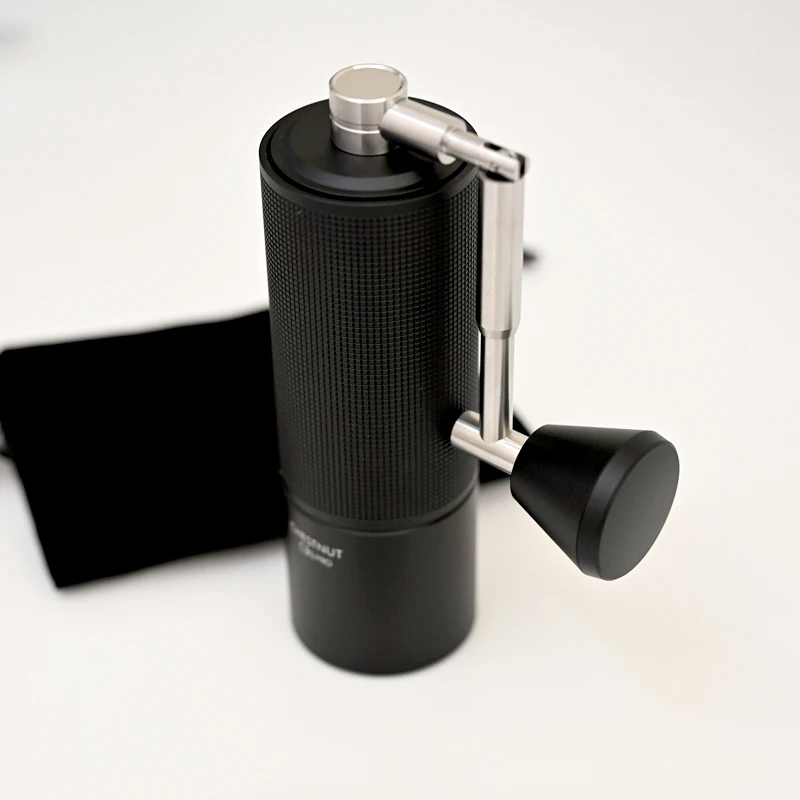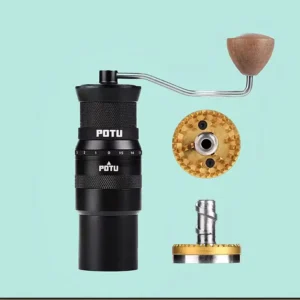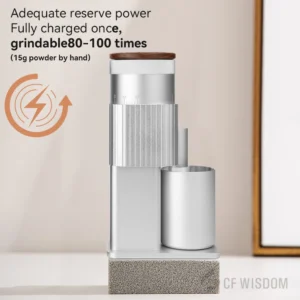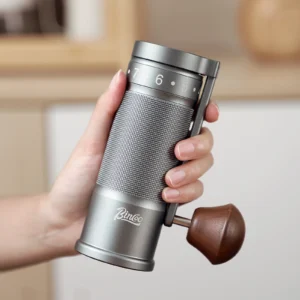Coffee grinding is an essential part of the brewing ritual, but it’s not just about getting the right grind size—it’s also about how comfortable the process feels. Ergonomic design in coffee grinders makes a significant difference in your daily brewing experience, reducing strain and increasing enjoyment.
Whether you’re a daily grinder or occasional brewer, the physical interaction with your coffee equipment matters. Well-designed ergonomic features can prevent discomfort, improve consistency, and make your coffee journey more pleasurable.
In this guide, we’ll explore what makes coffee grinders truly user-friendly, from handle design and grip to adjustment mechanisms and maintenance accessibility—all factors that contribute to both your comfort and your coffee’s quality.
Key takeaways:
– Ergonomic design reduces physical strain and improves grinding consistency
– Different grinder types (manual vs. electric) require specific ergonomic considerations
– Well-designed features can significantly enhance your overall coffee experience
– Proper ergonomics contributes directly to better coffee quality
Understanding Ergonomics in Coffee Grinders
Ergonomics in coffee equipment goes beyond simple comfort—it’s about designing tools that work harmoniously with human capabilities and limitations. For coffee grinders, this means creating devices that minimize strain, provide intuitive controls, and make the grinding process feel natural and effortless.
True ergonomic design considers not just how a grinder looks, but how it feels in use day after day. Many grinders might appear stylish but cause hand fatigue or wrist strain when used regularly. The best designs merge form and function, creating tools that are both beautiful and comfortable to use.
What Makes a Coffee Grinder Truly Ergonomic?
A truly ergonomic coffee grinder accommodates the human body’s natural movements and limitations. This includes consideration for hand positioning, applied force, and repetitive motions involved in grinding.
Effective ergonomic design principles for coffee grinders include:
- Alignment with natural wrist and arm positions during use
- Minimal force requirements to achieve desired results
- Intuitive controls that don’t require awkward hand positions
- Appropriate size and weight distribution for stability and control
Precision grind settings and ergonomic design work together—a grinder that’s comfortable to use makes it easier to achieve consistent results. Understanding these ergonomic fundamentals helps users make better choices when selecting equipment for their coffee setup.
Why Ergonomics Matters for Daily Coffee Grinding
The importance of ergonomics becomes particularly evident when grinding coffee becomes a daily ritual. Poor design can lead to physical discomfort that accumulates over time:
Physical Comfort and Reduced Strain: Ergonomic grinders minimize stress on joints and muscles, preventing issues like wrist strain and hand fatigue that can develop from repetitive grinding motions.
Enhanced User Experience and Grinding Consistency: When grinding is comfortable, you’re more likely to maintain proper technique, resulting in more consistent grounds and better coffee.
Long-term Health Benefits: Preventing and relieving wrist strain becomes increasingly important for coffee enthusiasts who grind beans daily over many years.
Accessibility Features: Well-designed grinders can accommodate users with different physical capabilities, making quality coffee more accessible to everyone.
For those who grind coffee daily, these ergonomic considerations aren’t luxuries—they’re necessities for sustainable enjoyment of the coffee ritual.
Essential Ergonomic Elements in Manual Coffee Grinders
Manual coffee grinders present unique ergonomic challenges. Unlike electric models, they require physical effort and coordination to operate. The good news is that modern designs have evolved significantly from traditional boxy mills, with manufacturers now paying close attention to how these tools interact with the human body.
Handle and Crank Design for Effortless Operation
The handle is your primary point of contact with a manual grinder, making its design crucial for comfortable operation. Hand-crank coffee grinders vary significantly in their approach to handle ergonomics:
Optimal Handle Length and Grip Materials: Handles between 5-7 inches provide the best leverage for most users. Materials matter too—wood offers warmth and traditional appeal, stainless steel provides durability, while rubber or silicone grips prevent slipping during use.
Side-Mounted vs. Top-Mounted Crank Positioning: Side-mounted cranks generally allow for a more natural arm position compared to top-mounted designs, which may require awkward wrist angles. The positioning affects how comfortable extended grinding sessions will be.
Knob Design and Comfort: The end knob should fit comfortably in your palm with smooth rotation. Rounded edges and grippy materials prevent slipping and reduce friction against the skin.
Foldable and Detachable Handle Options: These features enhance portability and storage without compromising grinding comfort. Magnetized handles offer convenience while maintaining stability during operation.
Body Contours and Grip Enhancements
The body of the grinder affects your grip stability and overall control during use. Comfortable manual grinders incorporate thoughtful design elements:
Diameter Considerations for Different Hand Sizes: Grinders with diameters between 2-2.5 inches accommodate most hand sizes comfortably. Some models offer tapered designs to fit diverse users.
Textured Surfaces and Non-Slip Materials: Subtle texturing or rubber inserts prevent the grinder from slipping during operation, especially important when grinding harder beans that require more force.
Strategic Weight Distribution: Properly balanced grinders feel more stable during use. The center of gravity should remain low to prevent tipping while applying force to the handle.
Material Choices That Impact Grip Quality: Materials like brushed stainless steel, textured polymers, or wood with natural grain not only look appealing but provide tactile feedback that improves grip security.
Effort Minimization Through Mechanical Design
Internal mechanics dramatically affect how much physical effort grinding requires. Manual coffee burr grinders with advanced mechanical features make the grinding process significantly easier:
Bearing Systems and Their Impact: High-quality bearings reduce friction and wobble during grinding. Dual bearing systems provide exceptional stability, making each turn smoother and requiring less force.
Burr Quality and Its Relationship to Required Force: Sharp, precision-machined burrs cut through beans more efficiently than dull or poorly manufactured ones, reducing the force needed to grind.
Optimized Gear Ratios: Some premium grinders incorporate gearing systems that multiply the force applied to the handle, making grinding lighter and faster.
Resistance Patterns Throughout the Grinding Process: Well-designed grinders maintain consistent resistance throughout the grinding cycle, avoiding sudden changes that can strain wrists or interrupt your rhythm.
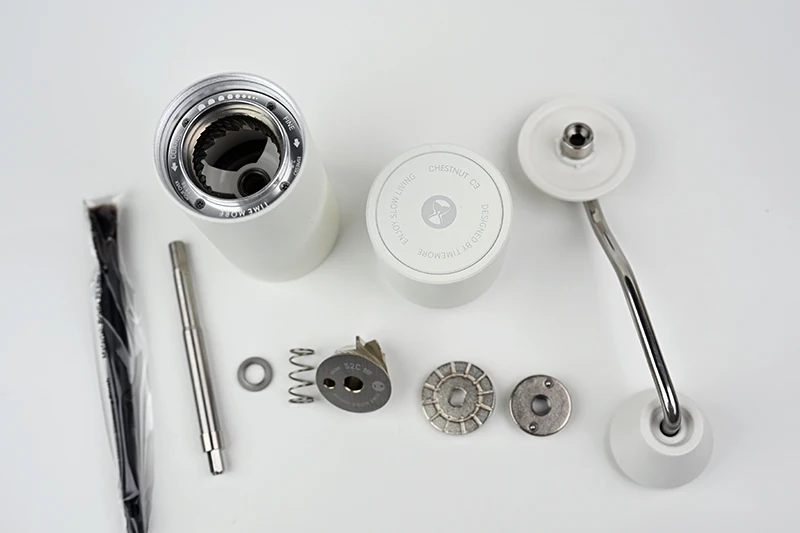
Smart Design Features in Electric Coffee Grinders
Electric coffee grinders introduce different ergonomic considerations than their manual counterparts. While they eliminate the physical effort of grinding, they present unique challenges in user interface design, container handling, and sensory experience that manufacturers must address.
Control Panel Ergonomics and User Interface
The control interface is where users interact most directly with electric grinders, making intuitive design crucial:
Button Size, Placement and Responsiveness: Buttons should be large enough to press easily, with adequate spacing to prevent accidental activation. Responsive feedback confirms that commands have been registered.
Digital Display Visibility and Information Layout: Displays should be readable from various angles, with clear, high-contrast text and intuitive information organization that doesn’t overwhelm the user.
Dial and Switch Accessibility: Controls should be accessible without awkward hand positions or excessive reaching. Textured surfaces on dials improve grip and precision when making adjustments.
One-Touch Operation Features: Preset functions that accomplish common tasks with minimal input reduce cognitive load and simplify the grinding process for daily use.
Hopper and Grounds Container Design
Bean loading and grounds collection should be straightforward processes that don’t interrupt your workflow:
Bean Loading Convenience and Capacity: Wide-mouth hoppers make adding beans easier and reduce spillage. Capacity should balance convenience with bean freshness considerations.
Static Reduction Technologies: Anti-static materials and design elements minimize coffee grounds clinging to containers and creating mess during transfer.
Container Removal and Replacement Mechanics: Grounds containers should detach and reattach smoothly, with clear alignment cues and secure locking that doesn’t require excessive force.
Dosing Features for Consistent Results: Integrated dosing mechanisms help deliver consistent amounts of ground coffee without requiring separate tools or extra steps.
Noise and Vibration Considerations
The sensory experience of using an electric grinder significantly impacts user satisfaction:
Sound Dampening Materials and Technologies: Strategic use of rubber gaskets, silicone components, and sound-absorbing materials reduces grinding noise to more pleasant levels.
Vibration Reduction for Counter Stability: Heavy base designs and vibration-dampening feet prevent grinders from “walking” across countertops during operation.
Motor Efficiency and Sound Quality: More efficient motors often produce less harsh noise. The quality of sound (pitch and tone) can be as important as volume for user comfort.
Psychological Aspects of Grinder Noise: Some users find certain grinding sounds satisfying while others prefer quieter operation—the best designs consider both volume and sound quality.
Precision manual grinders often provide a quieter alternative to electric models while still offering excellent grinding performance.
Precision Adjustment Mechanisms and Their Ergonomic Implementation
The ability to easily and precisely adjust grind size is fundamental to coffee preparation. However, many grinders fall short in making this process intuitive and comfortable. Ergonomic adjustment mechanisms should provide clear feedback, consistent results, and require minimal effort to operate.
Grind Size Selection Systems Compared
Different adjustment systems offer varying degrees of precision and ease of use:
Stepped vs. Stepless Adjustment Mechanisms: Stepped adjustments provide tactile and audible clicks between settings, making them easier to replicate but sometimes limiting precision. Stepless systems offer infinite adjustment points for perfect dialing in but may be harder to reproduce exactly.
External vs. Internal Adjustment Controls: External adjustment rings or dials allow for changes without disassembling the grinder, while internal mechanisms may offer greater stability but less convenience.
Numerical Indication and Setting Reproducibility: Clear numerical markings help users record and return to preferred settings. The best systems combine visual indicators with tactile feedback.
Lock Mechanisms for Setting Retention: Features that prevent settings from drifting during use ensure consistency between brewing sessions and reduce frustration.
Setting the correct grind for espresso requires particularly precise adjustment mechanisms that combine ease of use with fine control.
Tactile Feedback During Adjustments
The physical sensation of making adjustments contributes significantly to the user experience:
Click Mechanisms and Their Clarity: Well-defined clicks provide confirmation of setting changes without requiring visual attention. The resistance should be firm enough to prevent accidental adjustments but not so stiff that it requires excessive force.
Resistance Patterns During Setting Changes: Consistent, smooth resistance throughout the adjustment range makes fine-tuning more intuitive. Irregular or sticky points can lead to overshooting desired settings.
Visual Indicators Complementing Physical Feedback: Clear markings reinforce tactile sensations, creating a multi-sensory confirmation of adjustments that improves user confidence.
Material Choices for Long-Term Durability: Adjustment mechanisms made from hardened metals or high-quality polymers maintain their precision and feel over years of use, while inferior materials can wear quickly and become inconsistent.
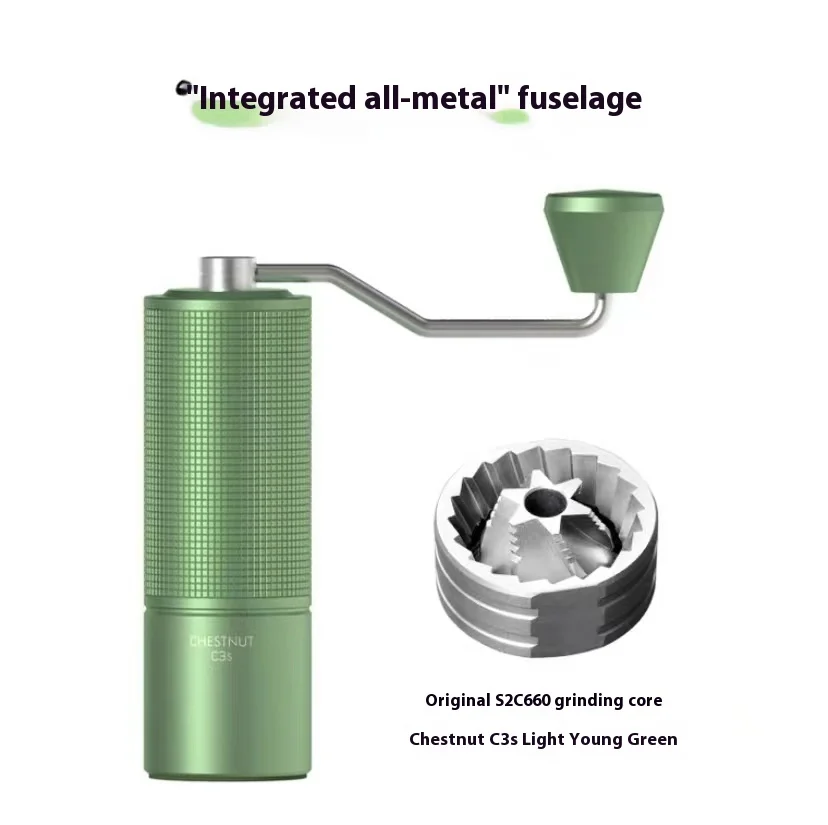
Maintenance Ergonomics: Keeping Your Grinder Clean and Functional
Maintenance is often overlooked in discussions of ergonomics, yet it’s a crucial aspect of the long-term user experience. Coffee grinders that are difficult to clean or maintain will frustrate users and may eventually fall out of regular use, regardless of their grinding performance.
Disassembly and Cleaning Accessibility
A grinder’s approach to disassembly and cleaning significantly impacts the maintenance experience:
Tool-Free Access to Key Components: The ability to access burrs and other critical areas without specialized tools makes routine cleaning more likely to be performed regularly.
Burr Removal and Cleaning Considerations: Simple burr removal systems with clear alignment markers for reassembly prevent frustration and ensure proper functioning after cleaning.
Surface Materials That Resist Coffee Oil Buildup: Non-porous materials and smooth surfaces minimize coffee oil adhesion and make wiping down components more effective.
Reassembly Intuitive Design Features: Keyed components that only fit together correctly, color-coding, or other visual guides help users reassemble grinders properly after cleaning.
Learning proper manual burr coffee grinder cleaning techniques extends your equipment’s lifespan while ensuring consistent flavor in your brews.
Maintenance Frequency and User Experience
The design can significantly influence how often—and how thoroughly—users maintain their equipment:
Design Elements That Reduce Cleaning Requirements: Anti-static materials, effective bean path design, and proper tolerances between moving parts can reduce coffee retention and minimize cleaning frequency.
Quick-Access Features for Routine Cleaning: Brush ports or removable panels that provide access to areas where coffee grounds accumulate make regular maintenance more convenient.
Indicators for Maintenance Timing: Some advanced grinders include use counters or cleaning reminders that help users establish appropriate maintenance schedules.
Longevity Considerations in Ergonomic Design: Easy-to-maintain grinders tend to remain in service longer, making their initial cost more justified through extended use.
Handheld coffee grinders often feature simpler designs that make maintenance more straightforward than complex electric models.
Portability Features for the Coffee Enthusiast on the Go
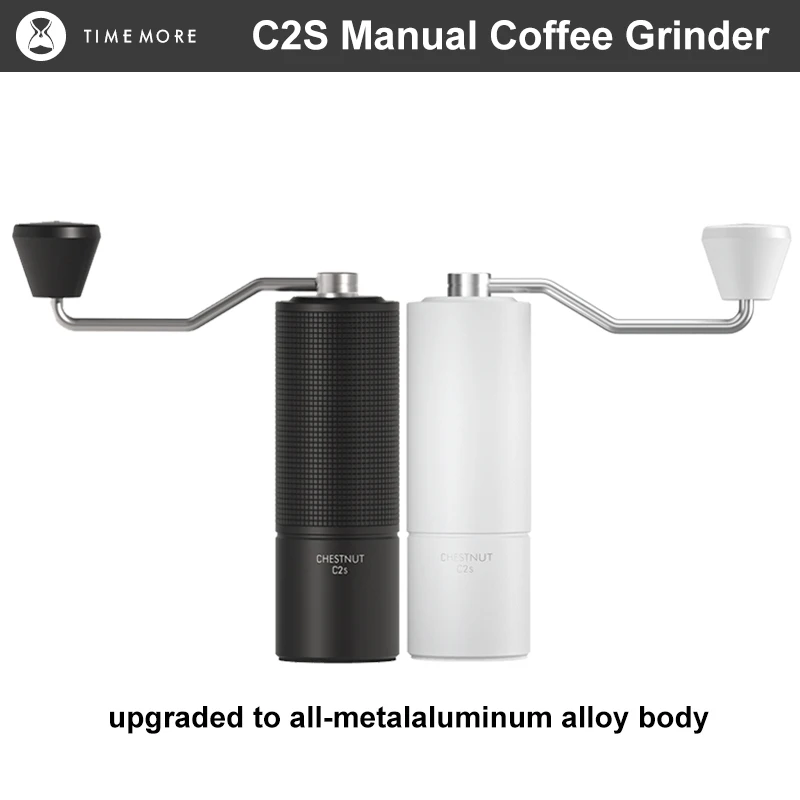
For coffee lovers who travel or have space constraints, portability becomes an important ergonomic consideration. A truly portable grinder must balance compact size with comfortable usability, avoiding designs that sacrifice ergonomics for mere smallness.
Travel-Friendly Design Elements
Effective portable grinders incorporate several key design elements:
Size-to-Performance Ratio: The most effective travel grinders maintain grinding quality and comfort while minimizing overall dimensions. This often means clever design rather than simply making everything smaller.
Weight Optimization Without Compromising Stability: Strategic use of materials like aluminum for non-critical components while maintaining stainless steel burrs and shafts keeps weight reasonable without sacrificing performance.
Protective Features for Transport: Integrated cases, handle locks, or protective caps prevent damage during travel and keep coffee residue contained.
Compact Storage Solutions: Features like foldable or removable handles, nesting components, or dual-purpose containers maximize functionality while minimizing space requirements.
Fine Adjustment Hand Grinder, Precision Manual Grinder, Travel Coffee Grinder
Price range: $185.11 through $494.63 Select options This product has multiple variants. The options may be chosen on the product pageHand Burr Grinder, Hand Crank Coffee Grinder, Manual Espresso Grinder, Portable Coffee Grinder
Price range: $262.72 through $300.22 Select options This product has multiple variants. The options may be chosen on the product pageManual Burr Mill, Manual Coffee Grinder Stainless Steel, Manual Coffee Mill Grinder, Mechanical Coffee Grinder
Price range: $127.26 through $130.32 Select options This product has multiple variants. The options may be chosen on the product pageHand Burr Grinder, Manual Coffee Grinder Stainless Steel, Precision Manual Grinder
Price range: $183.64 through $187.52 Select options This product has multiple variants. The options may be chosen on the product page
Travel coffee grinders have evolved significantly, now offering performance comparable to home models in remarkably compact packages.
Choosing the Right Ergonomic Grinder for Your Specific Needs
With so many ergonomic features to consider, selecting the right grinder requires matching these elements to your specific brewing habits and physical needs. What works perfectly for one coffee enthusiast might be uncomfortable or impractical for another.
Matching Grinder Ergonomics to Your Brewing Style
Your preferred brewing method and routine significantly influence which ergonomic features matter most:
Espresso vs. Filter Coffee Ergonomic Requirements: Espresso grinding typically requires finer adjustment capability and more force, making robust handles and precision adjustment mechanisms particularly important. Filter coffee brewers may prioritize capacity and grinding speed.
Daily Use vs. Occasional Grinding Considerations: Frequent users should prioritize comfort and durability, while occasional grinders might focus more on storage convenience and versatility.
Space Constraints and Grinder Footprint: Consider your counter space and storage options when evaluating grinder size. Compact designs can still offer excellent ergonomics through thoughtful engineering.
Hand Strength and Dexterity Factors: Users with arthritis or limited hand strength benefit from electric options or manual grinders specifically designed for easy operation with minimal force requirements.
Finding the perfect ergonomic coffee grinder means honestly evaluating your personal needs and preferences rather than simply choosing the most expensive option.
Evaluating Ergonomic Claims When Shopping
Manufacturers often highlight ergonomic features in marketing materials, but these claims require careful evaluation:
Hands-On Testing Strategies: Whenever possible, try grinders in person. Simple tests like grinding for 30 seconds or adjusting settings multiple times can reveal ergonomic issues not apparent from specifications.
Interpreting User Reviews for Ergonomic Insights: Look specifically for comments about comfort during use, especially from reviewers who mention long-term usage or specific physical considerations similar to yours.
Red Flags in Ergonomic Marketing: Be wary of vague claims like “comfortable design” without specific details about what makes it comfortable. Quality ergonomic features are usually described with specific measurements or materials.
Long-Term Comfort vs. Initial Impressions: Some discomfort may resolve as you develop technique, but persistent issues like awkward wrist angles or excessive force requirements indicate genuine ergonomic problems.
Finding the right balance of features for espresso grind settings requires considering both performance and comfort aspects.
How Ergonomic Design Enhances Coffee Quality
Beyond comfort and convenience, ergonomic features directly impact the quality of coffee you brew. This connection between physical design and taste outcome is often underappreciated but becomes evident through regular use.
The Connection Between Comfortable Grinding and Consistent Results
Ergonomic design contributes to better coffee in several important ways:
Stable Grinding Motion and Particle Distribution: A comfortable grinder that doesn’t slip or wobble produces more consistent particle sizes, leading to more even extraction and balanced flavor.
Precise Adjustment and Brewing Outcomes: When adjustment mechanisms are intuitive and stay in place, you can more reliably reproduce your favorite brewing recipes.
User Fatigue and Its Impact on Coffee Quality: Fatigue from uncomfortable grinding can lead to shortcuts or inconsistent technique. Ergonomic designs keep you grinding properly throughout the process.
The Psychology of Enjoying the Grinding Process: When grinding is pleasant rather than a chore, you’re more likely to grind fresh for each brew and pay attention to details that improve coffee quality.
The physical comfort provided by well-designed grinders turns what could be a tedious task into a satisfying part of the brewing ritual. This positive experience translates directly into better care in preparation and ultimately better coffee.
At Savor Suite, we understand that the journey to exceptional coffee involves every step from bean selection to final brew. Ergonomic grinder design isn’t just about comfort—it’s about creating tools that enhance your coffee experience while delivering consistent, exceptional results cup after cup.

